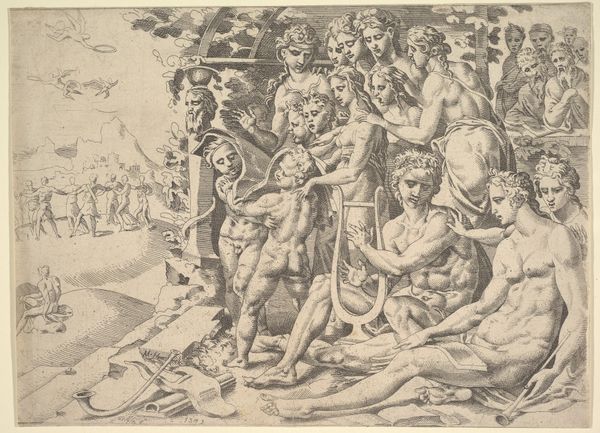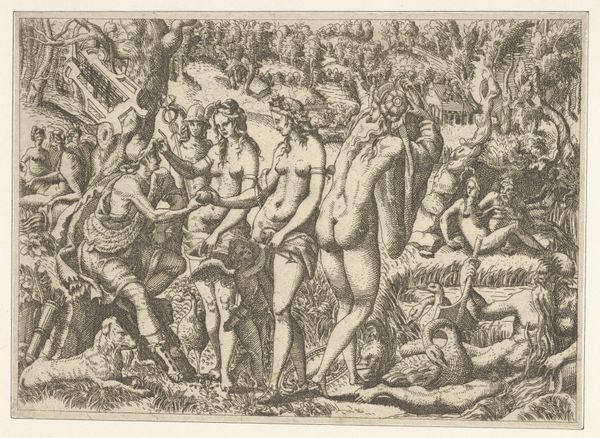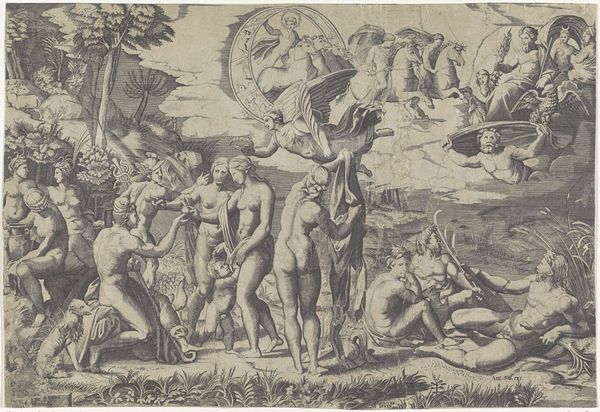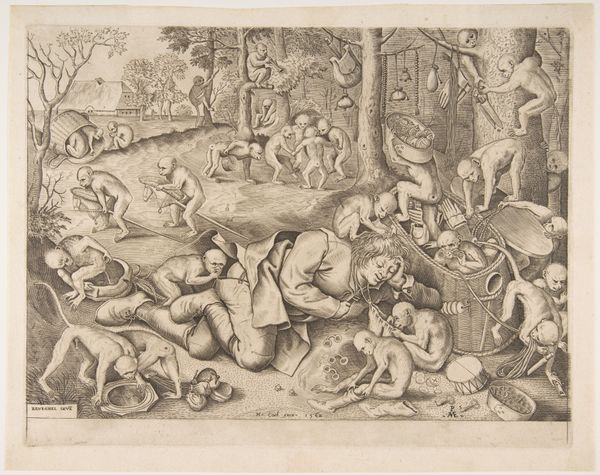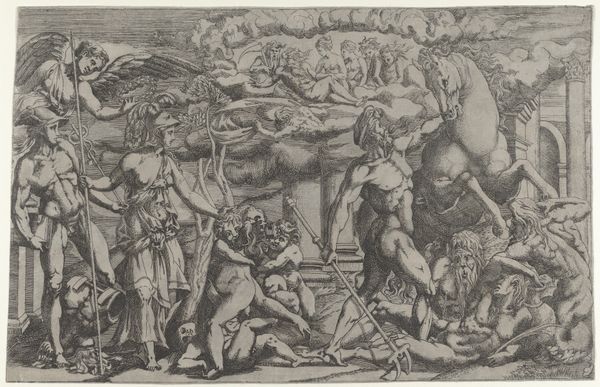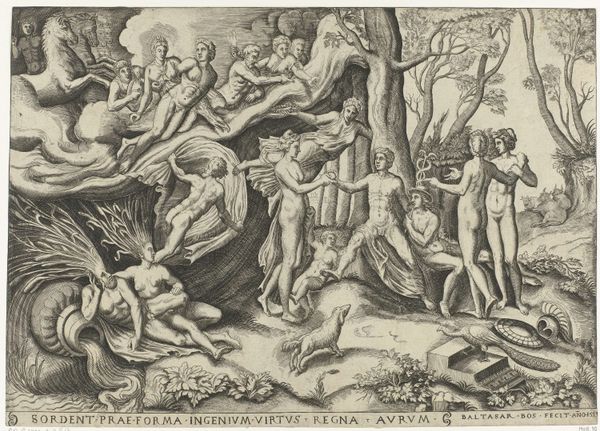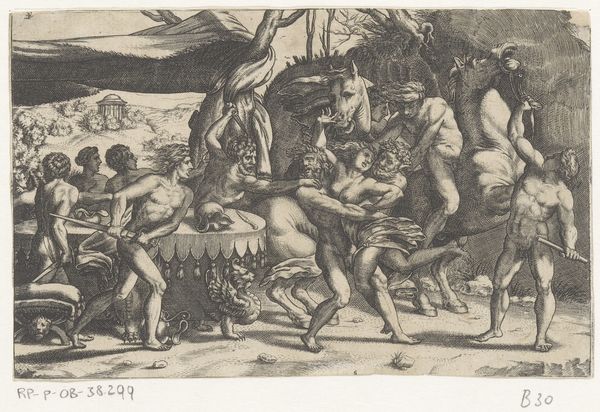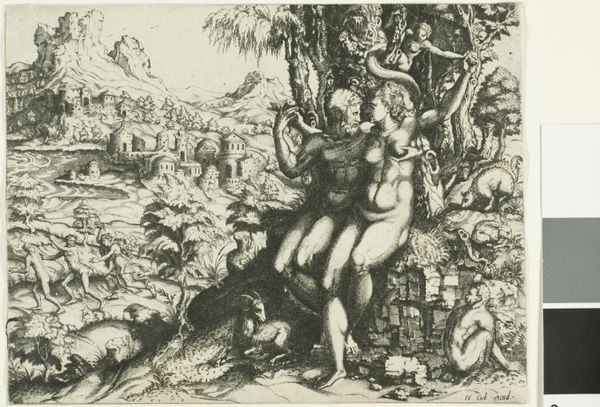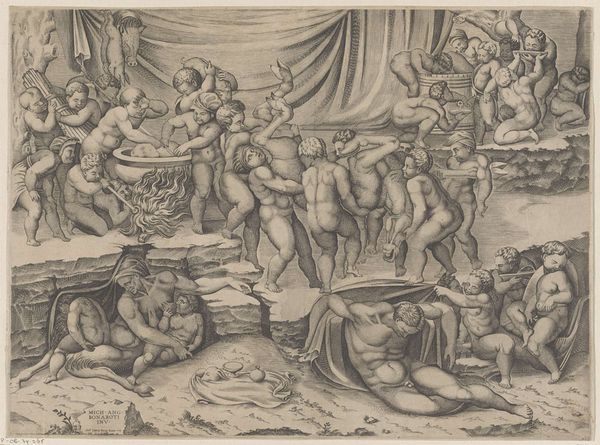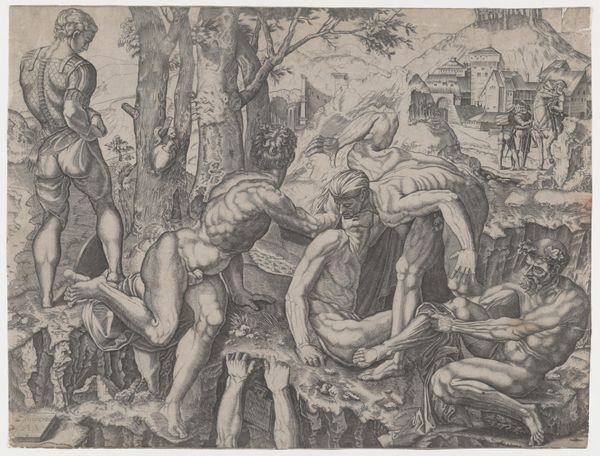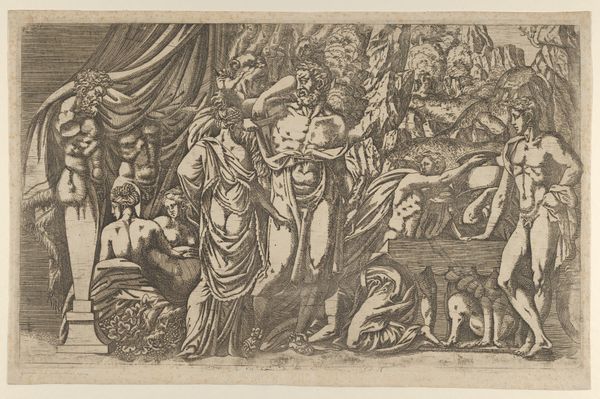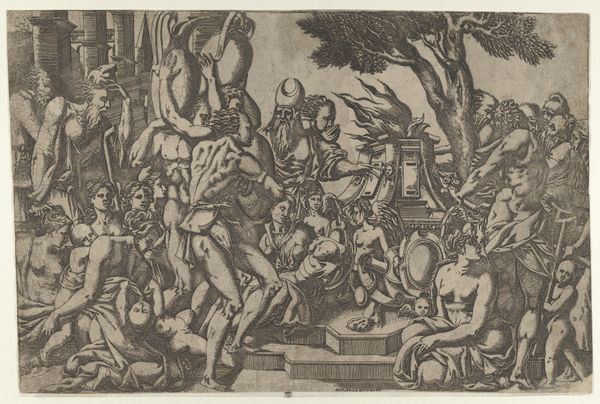
drawing, print, etching, pen
#
drawing
#
pen drawing
# print
#
pen illustration
#
pen sketch
#
etching
#
figuration
#
female-nude
#
pen
#
italian-renaissance
#
nude
#
male-nude
Dimensions: Sheet (trimmed): 9 15/16 × 15 5/16 in. (25.2 × 38.9 cm)
Copyright: Public Domain
Editor: We're looking at "Muses at the Foot of Mount Parnassus," an etching by Antonio Fantuzzi dating from 1540 to 1545. The density of figures is really striking. What is your reading of the composition, the interplay of bodies and line? Curator: Note the distribution of light and dark, how Fantuzzi uses dense cross-hatching to define form and create spatial recession. Observe, too, the strategic deployment of line to articulate musculature and drapery. It isn’t simply a question of representing a mythological scene. Fantuzzi grapples with the formal possibilities of the etching medium itself. How does he use the etching needle to simulate tonal variation? Consider, also, the lines, sometimes erratic and broken, contribute to a dynamic surface tension. Editor: That tension definitely creates a kind of nervous energy throughout the scene. Do you see a focal point or a clear hierarchy amongst the figures? Curator: The lines themselves become the subject. One could say the true subject of this etching is Fantuzzi’s technical skill itself, his virtuoso manipulation of line. Each mark carries semiotic weight. How do those clusters direct our eye? And the open space that seems just as carefully considered, creating contrast through void... Editor: That's interesting – I was initially trying to decipher the narrative, but it seems like the *way* the story is told is more crucial than the story itself. Curator: Precisely. In isolation from overt historical narrative, consider this scene of “Muses at the Foot of Mount Parnassus," this entanglement of human forms, an arrangement, a set of purely visual relationships, light, darkness, direction... Editor: That really gives me a fresh way to look at Renaissance prints; moving beyond iconography into pure visual mechanics. Thank you! Curator: And for me, too – your questions provide such useful provocations for viewing technique as an expressive mode.
Comments
No comments
Be the first to comment and join the conversation on the ultimate creative platform.
